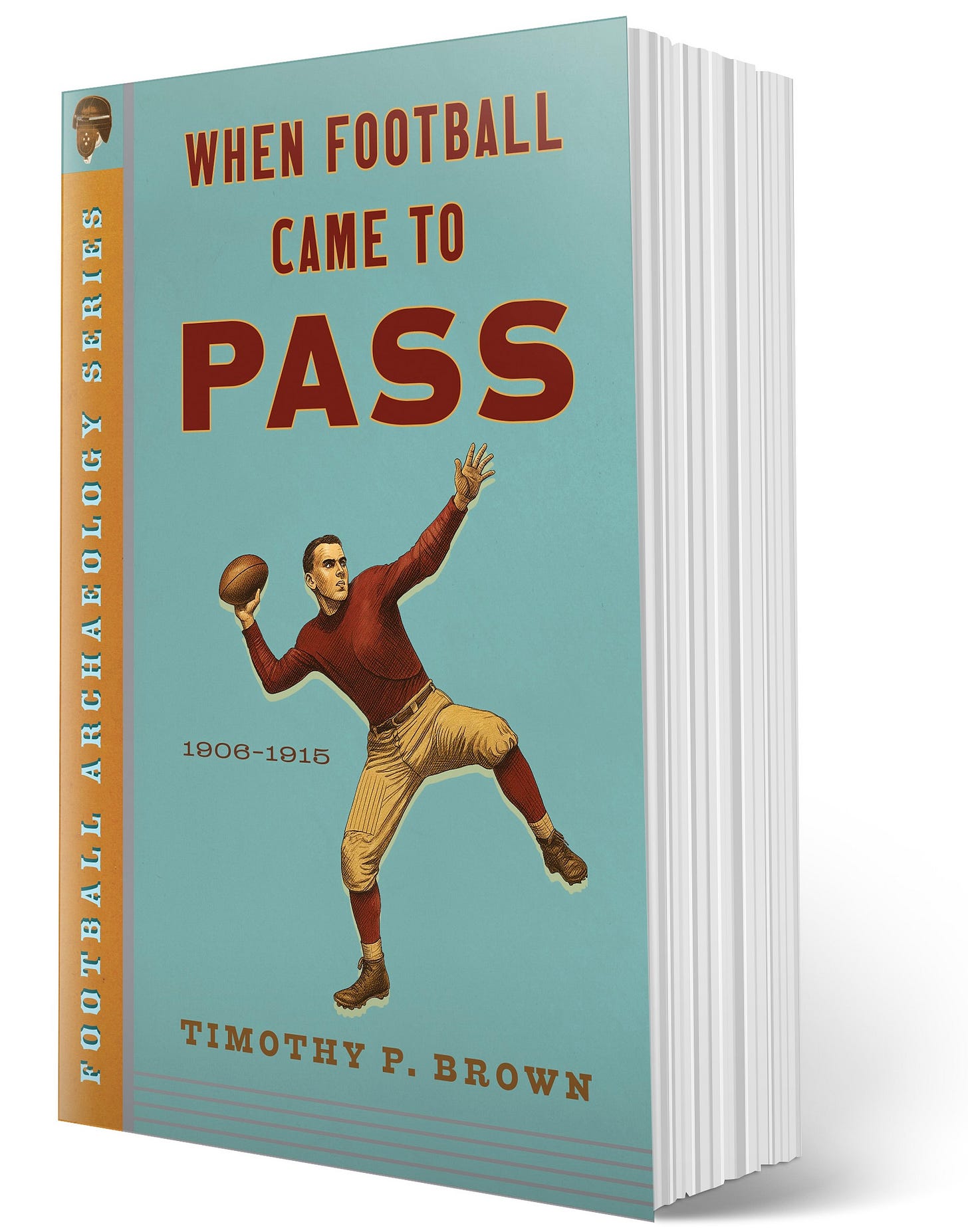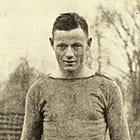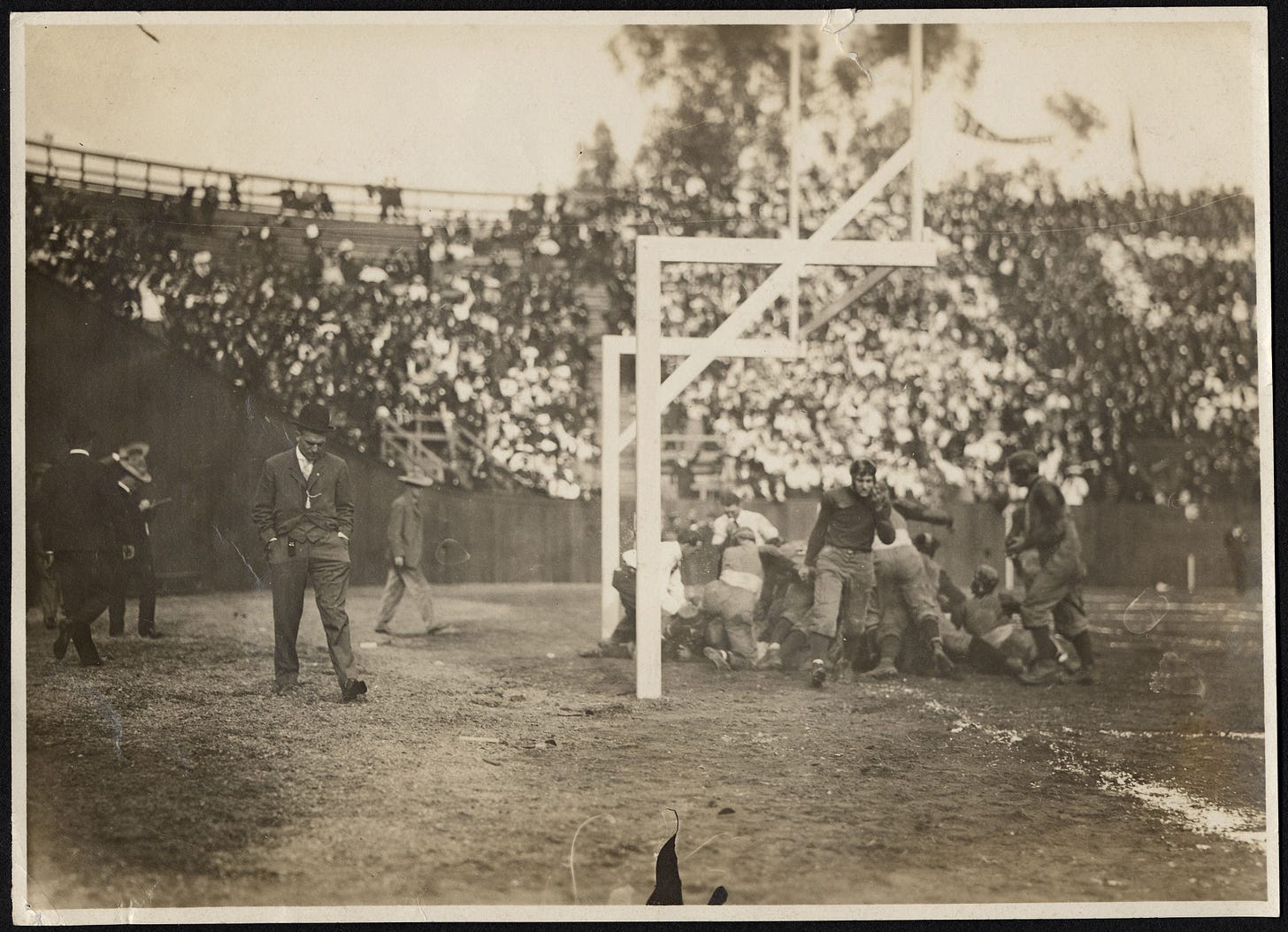Today's Tidbit.. A Look at Early Incomplete Pass Penalties
A while back, I wrote a Tidbit about the 1920s and 1930s, a time when football penalized incomplete passes, specifically the second, third, and fourth incomplete pass in a series of downs. The story below did not cover penalties on incomplete passes that preceded the 1920s. Also, it did not cover a separate set of penalties covering incomplete passes thrown into the end zone. Since I received a request or two for more information on this topic, this Tidbit covers the early penalties for incomplete passes landing in the field of play, those of the 1920s-1930s, and those for incompletions in the end zone. I won't repeat everything in the article linked below, so those who fail to read that article do so at their peril.
Let's start at the beginning. When the football world adopted the forward pass in 1906, there was a surprising level of opposition to legalizing it. Many, including Rules Committee members, called for eliminating the forward pass for next decade and more. Even more folks wanted to restrict the forward pass heavily. There were several motivations behind the opposition, including the fact that the forward pass violated a fundamental rugby rule, and it pushed the game away from the smashmouth game that many loved. Plus, many argued at the time that successful forward passing resulted from luck rather than skill. Given football's early throwing techniques and absence of passing game fundamentals, those criticisms were more on target than many early passes. It took a decade to figure out the forward pass and how to throw it effectively, which I cover in When Football Came To Pass, which will release in the next few days.
Before football legalized the forward pass, throwing the ball forward was a foul and resulted in a turnover, so in 1906, the rules allowed successful forward passes but treated incomplete passes as turnovers. Of course, the penalty was one more reason for teams to avoid tossing the ball. Many teams threw forward passes only in desperation, much like Hail Mary passes of today.
The 1907 rules reduced the penalty for incomplete passes to 15 yards, though tipped passes that fell incomplete were treated as fumbles, making them live balls. That only lasted a couple of years as the rulemakers tried to find the right balance between freeing and restricting the forward pass.
Another change came in 1910, when the penalty for an incomplete pass landing on the field of play disappeared. The failed attempt cost the offense a down, like today, with the ball returned to the spot of the pass. Since the 1910 rules also required passes to be thrown from at least five yards behind the line of scrimmage, returning the ball to the spot of the pass effectively resulted in a penalty of five yards or more, so they changed the rule in 1911 to return the ball to the previous spot.
From 1906 through 1911, passes caught behind the goal line, crossing the goal line and landing incomplete, bouncing across the goal line, or hitting the goal posts or crossbar resulted in a touchback. The combination made teams reluctant to throw the ball when deep in the opponent's territory. That issue partly went away in 1912 when the rulemakers created the end zone and allowed receivers to catch the ball beyond the goal line. Still, passes that hit the goal posts or crossbar or landed incomplete after crossing the goal line continued to result in touchbacks. (Remember, the goal posts were on the goal line until 1927.)
As forward passing became more widespread after WWI, the traditionalists once again took aim at indiscriminate passing. There was a right way and a wrong way to play football, and flinging the ball all over the field was not the right way, leading to a 1926 penalty of five yards for the second, third, or fourth incomplete pass in a series that lands in the field of play.
Significant changes occurred in 1934 as coaches increasingly advocated for a more open, passing-friendly game. The rule makers made the ball slimmer and easier to throw in 1929 and made it narrower still in 1934. They also removed the penalty tied to multiple incomplete passes in a series that landed in the field of play. A third rule change eliminated the rule that made incomplete passes thrown into the end zone into a touchback, other than on fourth down.
FWIW, for purposes of this article, I ignored intentional grounding, which arrived in 1914, and perhaps a few other issues.
Postscript: Per the comment about the 1912 rule mentioning forward passes hitting spectators in the end zone, crowd control was a bigger issue back then, especially at fields that kept spectators standing behind ropes. Though pre-end zone, the image below shows people walking and standing just past the goal line just after a touchdown was score in the 1905 Cal-Stanford game.
Football Archaeology is reader-supported. Click here to donate a couple of bucks, buy one of my books, or otherwise support the site.







"spectator in the end zone" Yikes!